Menu
Lenten and Easter Season


Lenten and Holy Week Schedule
Sign up to receive the PWRDF daily Lenten devotion
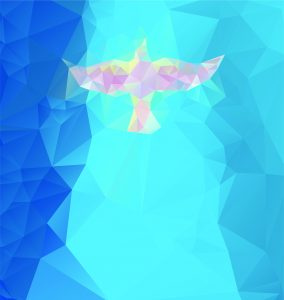
Lent Reflection
NOW AVAILABLE!
PWRDF’s Lenten resource, Our Lenten Journey through the Waters of Baptism, provides an opportunity to pray, act and give while deepening your understanding of the work of PWRDF and partners. Written by the Venerable Charlene Taylor of the Diocese of Eastern Newfoundland and Labrador, the reflections are available as a single  downloadable PDFor as daily devotionals in your inbox.
downloadable PDFor as daily devotionals in your inbox.  Click here to access the PWRDF Website to view
Click here to access the PWRDF Website to view
| |
Donna Giles
a mother of two and a grandmother, is a lifelong resident of Cole Harbour, Nova Scotia, and the seventh generation of her family to live in the community. She is also a member of The Anglican Church of Saint Andrew, Cole Harbour. Growing up in a farming family, she learned to have a great appreciation for nature. She spent many hours with her dad, both fishing and learning about plants and animals. She saw how much beauty has been gifted to the world and hoped to find a way to share her vision with others. After working for 36 years as a public servant for the province, she retired in 2016 and took up photography as a hobby. Photographing nature is one her favourite pastimes. The beauty and intricacies of nature has been an inspiration for her work. You can oftentimes find her standing in awe of creation as she observes the colours, sights, sounds, and power of Mother Nature at work before trying to capture it digitally.
Because of her love for the environment, she is happy to share some of her work with you during this Lenten season as a reminder of how beautiful the world around us is and how important it is to take good care of our planet and everything in it so that we can all live safely and harmoniously as one. She hopes you will enjoy this journey with her through the Environmental Stations of the Cross and to reflect on what you may be able to do as an individual or a member of a group to promote a greener Earth.
Click link below to view.
| |
The Traditional purpose of Lent is the preparation of the believer -
Through prayer, reflection, penitence, alms-giving and self-denial; a time of spiritual growth, recalling the events linked to the Passion of Christ. The season of Lent is the forty-day period before Easter, beginning this year on Ash Wednesday, March 6, 2019
Below are brief descriptions of days observed in Lent, Holy Week and Easter season.

Shrove Tuesday
originated during the Middle Ages. Food items like meats, fats, eggs, milk, and fish were regarded as restricted during Lent. To keep such food from being wasted, many families would have big feasts on Shrove Tuesday in order to consume items that would inevitably become spoiled during the next forty days. The tradition of eating pancakes on Shrove Tuesday came about as a way to use as much milk, fats, and eggs as possible before Ash Wednesday.In France, the consumption of all fats and fatty foods on this day coined the name "Fat Tuesday" or Mardi Gras.

Ash Wednesday
is the 1st day of Lent. Ashes, made from burned Palm Crosses from the previous year’s Palm Sunday, are placed on the foreheads of the faithful as a sign of repentance and of our mortality –“remember thou art dust, and to dust thou shall return”.
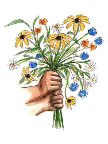
Mothering Sunday
The Fourth Sunday of Lent is known as "Mothering Sunday". Centuries ago it was considered important for people to return to their home or 'mother' church once a year. So each year in the middle of Lent, everyone would visit their 'mother' church and their return became an occasion for family reunions. As they walked along the country lanes, children would pick wild flowers or violets to take to church or give to their mother as a small gift.
Mothering Sunday was also known as Refreshment Sunday because sweet cakes are shared and the fasting rules for Lent are relaxed for that day.


Palm Sunday
Also called Passion Sunday, Palm Sunday always falls on the Sunday before Easter. It commemorates the triumphant entry of Jesus into Jerusalem before his trial and crucifixion. The crowds of people who were in Jerusalem for Passover lay down their cloaks and waved small palm branches in front of him, proclaiming him as the messianic king. Palm Sunday is marked by the distribution of blessed palm leaves tied into crosses.
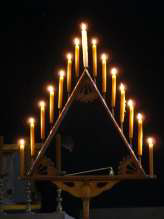
Tenebrae
Tenebrae, which is Latin for “shadows”, is celebrated on the eve of Maundy Thursday. The liturgy of Tenebrae is characterized by the gradual extinguishing of candles, and the reading and chanting of Psalms and Lamentations. After each reading, as the candles are extinguished one candle at a time, we remember the struggle of God’s people. By the end of the liturgy the only light left in the sanctuary is the Christ candle which is then take away as Christ was taken away to be crucified. The Congregation sits
together in darkness and silence until a loud sound is heard signifying the earthquake at Christ’s crucifixion. The Christ Candle is then returned to the gathered congregation and the people leave in silence.

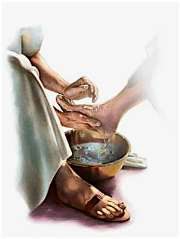
Maundy Thursday
celebrated on the Thursday before Easter, to remember the day of the Last Supper which began the practice of celebrating the Eucharist. and recalls the night on which Jesus was betrayed by Judas in the Garden of Gethsemane. The word “maundy” comes from the command (mandate) given by Christ at the Last Supper, that we should love one another. The service includes the ceremonial washing of feet as a gesture of humility and in remembrance of Jesus’ washing the feet of the disciples. The altar coverings and liturgical ornaments are removed from the sanctuary after the Eucharist. The "stripping of the altar" symbolizes the abandonment of Jesus by his disciples and the stripping of Jesus by the soldiers prior to his crucifixion.

Good Friday
Good Friday is the Friday of Holy Week and is traditionally a time of fasting and penance, commemorating the anniversary of Christ's crucifixion and death. The sacrificial death of Christ, with the resurrection, comprises the heart of the Christian faith.
The Service of Anointing for healing is offered to those who wish prayers for themselves or others. Communion is about healing and renewal, and the laying on of hands and anointing opens us more fully to the healing power of the Holy Spirit in our lives.

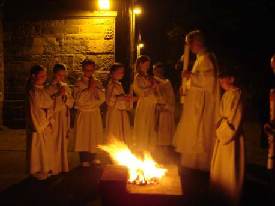
Holy Saturay
The Easter Vigil, also called the Paschal Vigil, is the first official liturgical celebration of the Resurrection of Jesus, held in the evening of Holy Saturday—but is considered to be the first celebration of Easter Day.
The vigil begins between sunset on Holy Saturday and sunrise on Easter Sunday outside the church, where the Easter fire is blessed by the celebrant. This new fire symbolizes the radiance of the Risen Christ dispelling the darkness of sin and death. The Paschal candle is blessed and then lit.
The candle is carried by a priest through the church, itself in complete darkness, stopping three times to chant an acclamation – “The Light of Christ”. As the candle proceeds through the church, all present receive candles which are lit from the Paschal candle. As this symbolic "Light of Christ" spreads throughout those gathered, the darkness is decreased.
Once the candle has been placed on its stand in the sanctuary, the lights in the church are switched on and the assembly extinguishes their candles
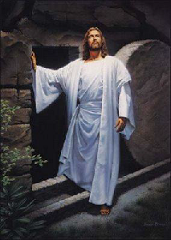
The Sunday of the Resurrection, or Easter Day
Easter is the most important religious feast in the Christian liturgical year. According to Christian scripture, Jesus was resurrected from the dead on the third day after his crucifixion and we celebrate this resurrection on Easter Sunday. Easter also marks the end of Lent, a season of fasting, prayer, and penance.
